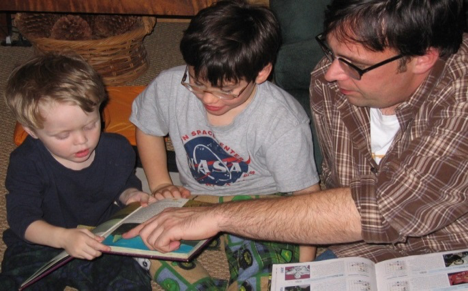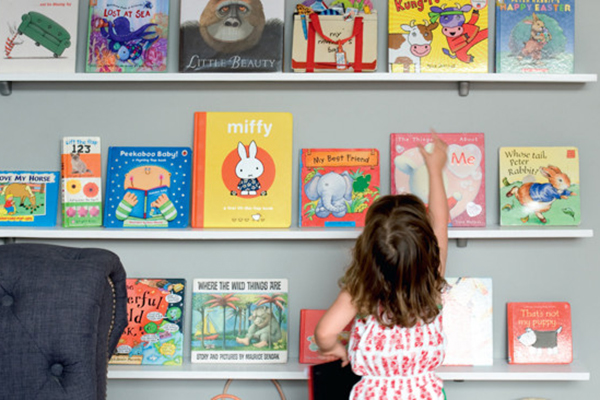
Recently a friend of mine groused, “Any idea about what I can do to improve my daughter’s reading ability? She’s five and she’s a bit slow at reading for her age. I can’t wait for her to be able to read more independently by herself.”
Let’s unpack this.
“She’s five and a bit slow at reading for her age.”
Children are not exempt from the rat race of life, and unfortunately, there’s an expectation that the earlier our kids read, the better. This collective anxiety has contributed to the proliferation of phonics enrichment classes and the use of flashcards so that children aged a year and a half are able to read before they can even physically make the sounds.
What these techniques develop, however, is rote memorisation and the mechanical ability to decode letters into sounds and words. Decoding is an important skill, and the most easily manifested one when it comes to reading, but there are a whole lot of other reading strategies that need to happen prior to and alongside this in order for kids to understand what they are reading.
Reading beneath the surface
So what are these reading strategies? First, let’s talk about how most people read to their kids. I think you probably do the following: read the words. If they do something beyond just reading the words, it’s probably to explain the meaning of unknown or difficult words, or to comment on the pictures, but the priority is clearly the forward motion of flipping the pages and to get from beginning to end.
I have two magic words for you – think aloud.
As you read, give voice to all the thoughts and pictures that pop into your head. This is going to take some practice for you, at first, because you may not even realise all the reading strategies that you use when you read a piece of text, because at this point, it’s second nature to you. This type of reading looks like this: (Underlined parts are the actual lines from the book)

“Let’s have a look at this book. It’s called Mister Seahorse. He’s very colourful; I love the different spots of colour. What colours do you see? Which is your favourite? I guess we’ll find out more about this seahorse inside.”
We bring what we know about the world to everything we read, and from the moment we clap eyes on the cover of a book, we have expectations of what the text will be about. The more we predict, the better able we are to understand a text.
“Oh, there’s another, smaller seahorse here. Who could that be? A friend? Or brother? Or wife? Mr and Mrs Seahorse – oh is that a friend, brother or wife? Yes we guessed correctly.”
More prediction, but also verbalising explicitly that our predictions were right (or wrong).
“Mr and Mrs Seahorse drifted gently through the sea. Ooh, I can really picture them in the water. What do you think the water’s like? Is it calm or rough? How do you know?”
When we read, we see pictures in our mind, and this helps us to understand texts better. Ask questions to check your child has understood the vocabulary.
“Mrs Seahorse began to wiggle and twist, this way and that. Let’s wiggle and twist together! Can you think of any other animals that wiggle and twist? Maybe a worm? Or snake?”
Again, engage your child in vocabulary, whether it’s illustrating meaning through gestures, pictures, synonyms or examples.
Another important thing to do is to get your child to personalise and connect to stories, which make them more memorable and deepen understanding. i.e.
“Do you remember feeling scared like this?”
“Would you want to live on this island?”
“Is this boy as naughty as the one in the movie we saw yesterday?”
“Can we find plants like these where we live? No, of course not. We don’t have any deserts.”
A word of caution: the above example is thinking aloud to the nth degree, so use this judiciously. I’ve had many a moment when an exasperated Alex has said to me, “Can we please just read? Stop asking me questions!”
Building a foundation
Going back to my friend frustrated with her daughter: “I can’t wait for her to able to read more independently by herself.”
We’re all busy parents, and I, too, must confess to the bliss of solitude when Alex is in his bedroom reading to himself. However, it’s really important to read to and with our children, even into their teenage years.

First of all, decoding can be tiring, and your reading aloud takes the burden off of them. Sometimes this means you insisting that you read instead of them, because they may not recognise how tired they are. With Alex, who can get quite stubborn about wanting to read everything, I negotiate us alternating pages. Your child can then concentrate on not how to sound out the words, but what they mean.
Secondly, when we read, we model language. Not just how to decode the words, but to interpret font and punctuation and to convey emotions through the way we stress and intone the words we read. This influences not just reading, but speaking, too.
Ultimately, engaging your child through the posing of questions and modelling of strategies mentioned above will go a much longer way towards developing their ability to read than phonics, flashcards and the inevitable practice tests that come later.
Build that foundation now, and make that time to read deeply with your child.
By Uma.
Uma is a Malaysian mum who works in teacher education. She has a six-year-old son, Alex.
+++++
Read also: 14 Empowering Children’s Books to Add to Little Girls’ Bookshelves

In an age where little girls are getting the same “princess” story over and over, it’s time to mix it up! Check out our book list here.





